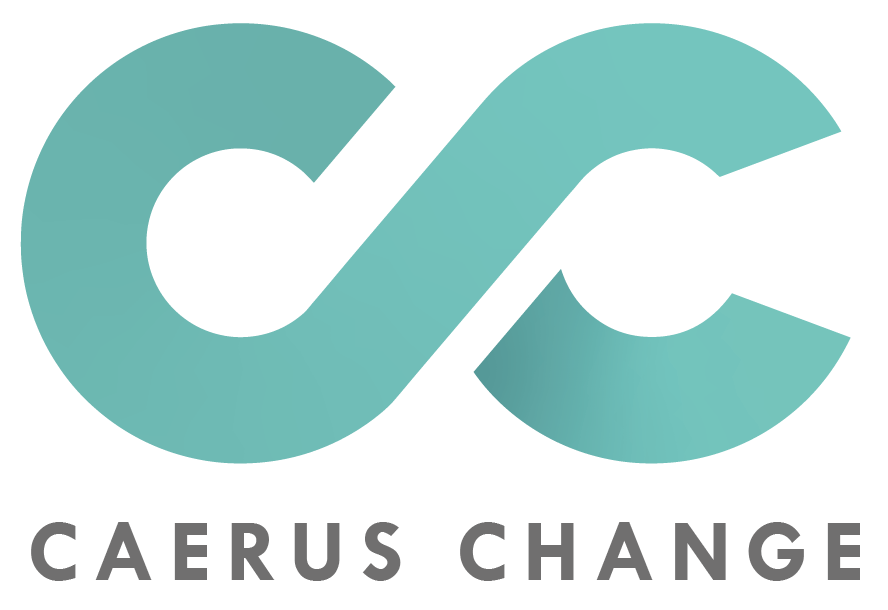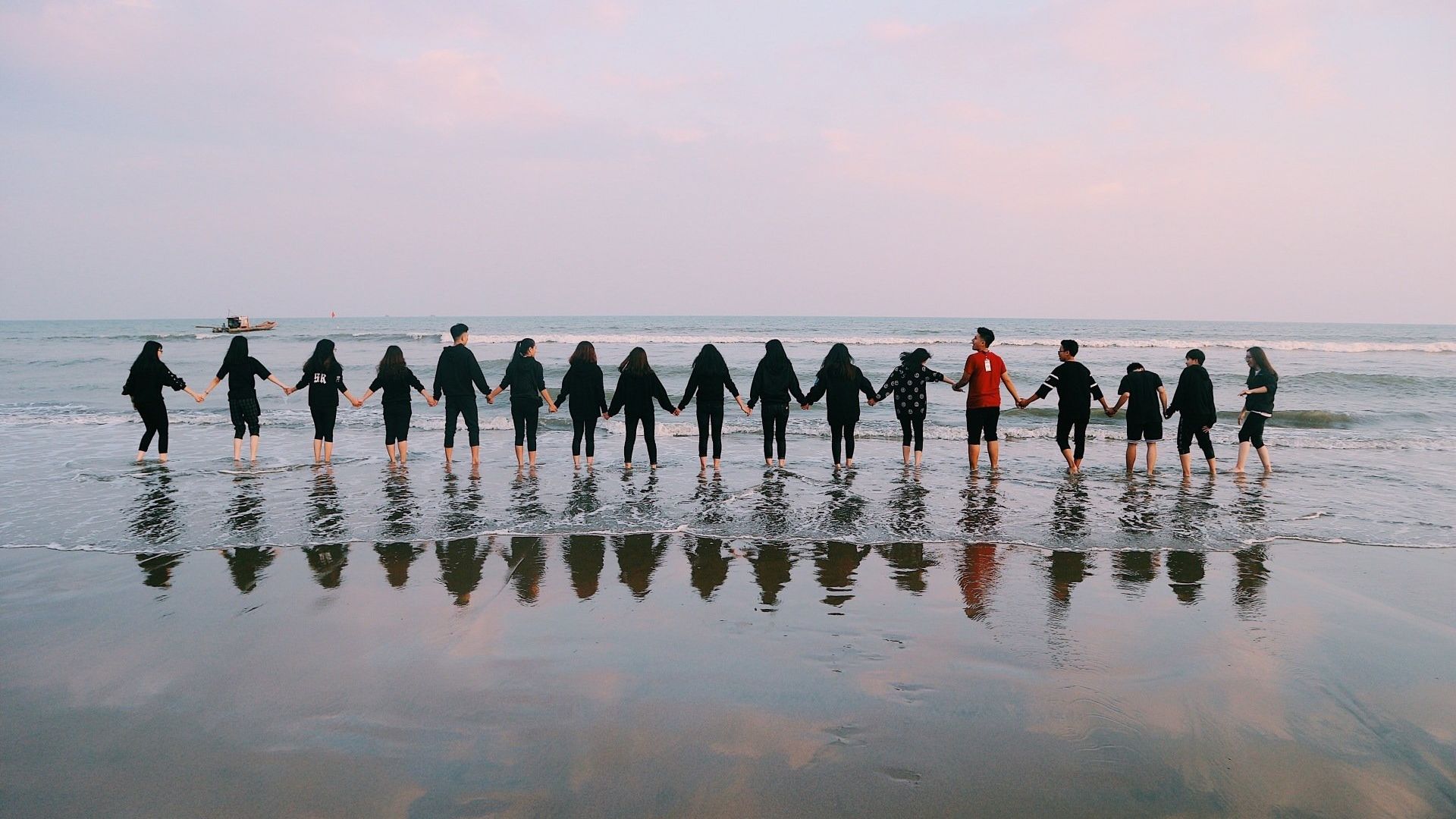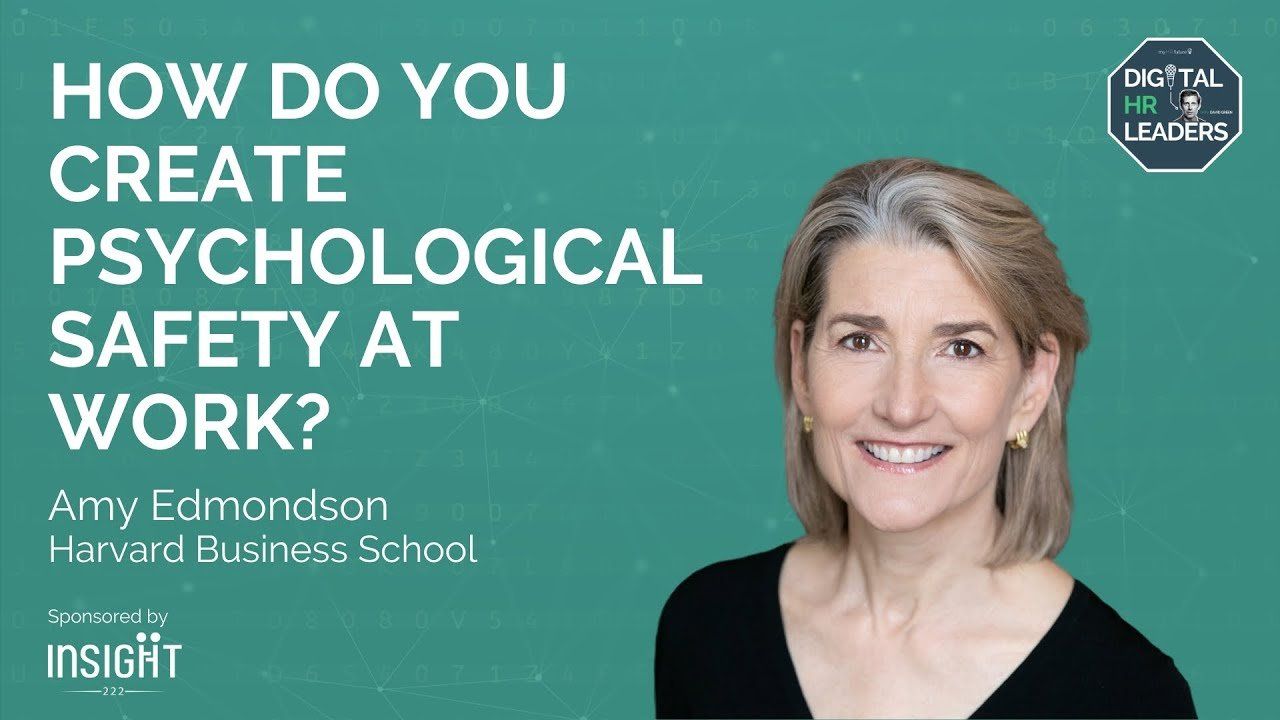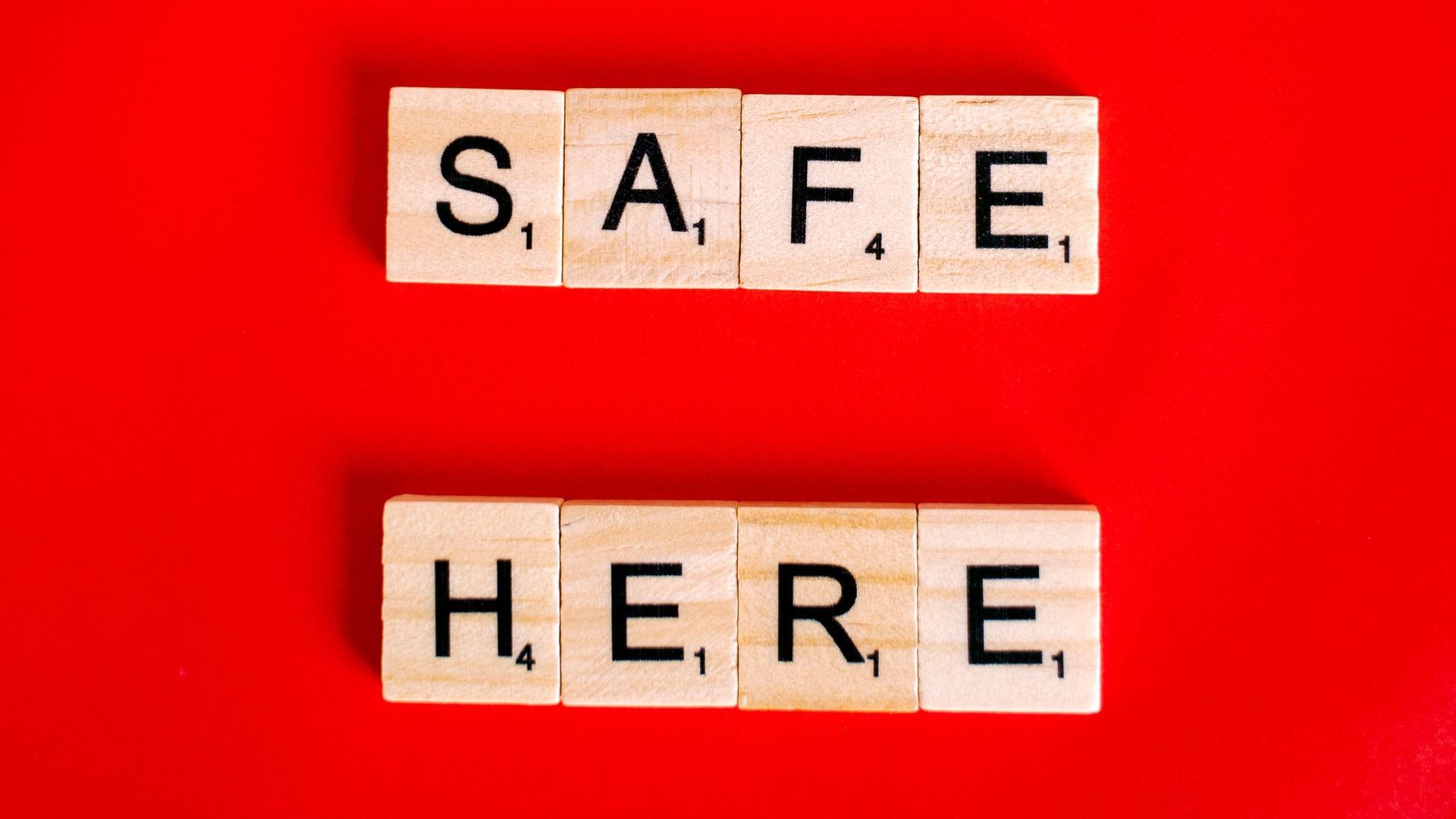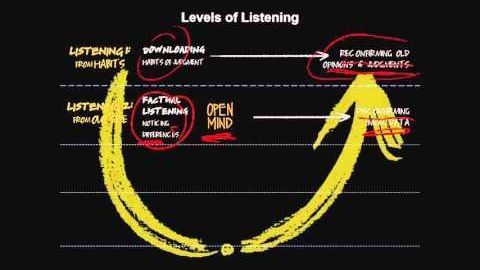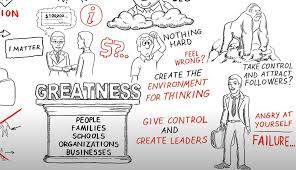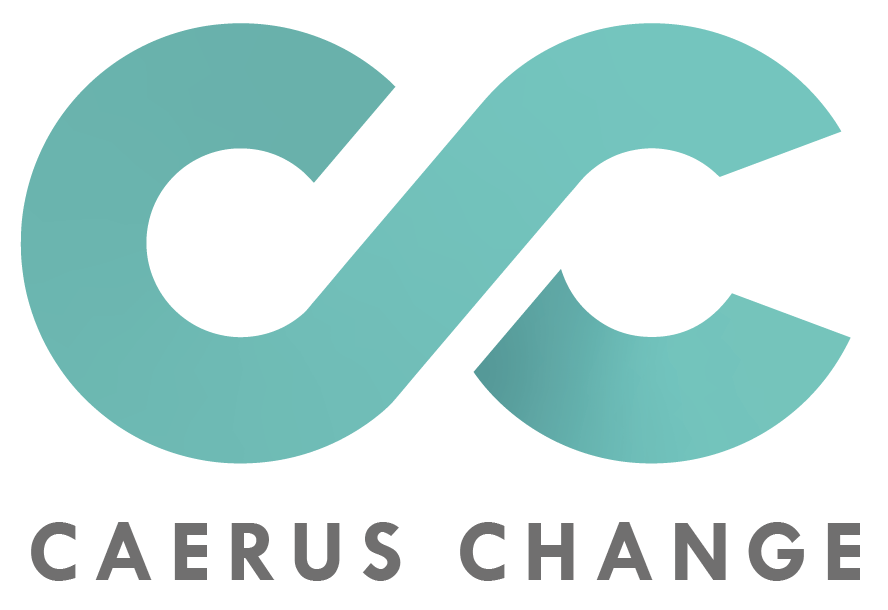"Learning is not compulsory
but neither is survival"
W Edwards Deming
Videos
Articles
To Build New Habits, Get Comfortable Failing
by
Sabina Nawaz -
HARVARD BUSINESS REVIEW
Most of us don’t wake up in the new year resolving, “This will be my year of failure!” But perhaps we should.
If you want to succeed at new habits, you need to first learn to succeed at failing.
-
Read the full Article
Sociologist Dr. Christine Carter says our success at adopting a new habit depends on our willingness to be bad at it at first. And no matter how smart or skilled we are, new habits — at least any worth pursuing — are going to feel clunky at the outset. We are more likely to falter than achieve an instant state of flow. Because our minds automatically steer us away from that outcome, we need to learn to fail in small steps.
Here are four strategies I discuss in my workshops and that many of my clients have successfully adopted for new resolve that won’t dissolve in a few weeks but will instead evolve into lifelong strategies for success.
Our enthusiasm at setting big goals for ourselves is matched by our fear of failure down the road. We readily convince ourselves that today is the wrong day to get started — to write that strategy document or have a difficult conversation. But there’s a window of opportunity between when we dream of our goal and before our self-protective reasons scream at us to retreat. Use this window to make a commitment to someone else. For example, you might tell your peer with whom you need to have a frank conversation, “I’d like to discuss our approach to design. Can we set up time next week?” Or just compose an email that will accompany a daunting deliverable before even starting the project. By beginning with the email, we create momentum to get out of our heads and make ourselves accountable to someone else. Once the declaration is out of your head and received by (or scheduled with) someone else, it’s much harder to retract.
Entrepreneur Jia Jiang was celebrating the new acquisition of his business when the deal collapsed. He knew that surviving rejection is a necessary skill as an entrepreneur, but he hated feeling rejected. Jiang decided to build his immunity to rejection by designing a 100-day series of small experiments where he was likely to hear “no.” These ranged from asking to play soccer in a stranger’s backyard to asking if he could present the weather forecast while he was being interviewed on live TV.
You can immunize yourself against big letdowns by implementing experiments where you will fail in tiny ways. Don’t like public speaking? Your voice wobbles and you stumble over your words, feeling more self-conscious by the moment? Make your experiments small. Record yourself speaking one sentence and then watch the video, or simply ask one question aloud in a meeting where you don’t have to speak up. By exposing ourselves in small doses to the strength we’re trying to build, we are less likely to suffer serious consequences if we fail — and we might even triumph. With each step, we strengthen our immunity to the downsides of a new habit, increasing our chances of acing it in the future.
As the saying goes, it’s not that you fall that matters, but how you get up. Similarly, when you fail in small ways, identify what you’ve learned in the process. We tend to evade the limelight (maybe even take a sick day or two) when we haven’t landed the perfect formula. Instead, amp up the advantages of learning to tamp down the shame of failure.
For example, one organization I work with has a “lessons learned” database. After each milestone, members of the team reflect on what they learned and create entries in this repository. Colleagues who work on the next project then review these insights before launching their work. Individually, you can reflect on your own learnings and share it with your team in a meeting or in writing — or simply have it handy to flip back to later on your own. Additionally, start with more tentative language as you test out new skills. Framing something as an experiment, beta, or draft places you in a learner mindset. It makes perfection unnecessary, allows you to move faster, and garner helpful feedback and buy-in along the way.
Describe the item or answer the question so that site visitors who are interested get more information. You can emphasize this text with bullets, italics or bold, and add links.
Psychological safety and the critical role of leadership development
McKINSEY & COMPANY
While the benefits of psychological safety are well established, a new survey suggests how leaders, by developing specific skills, can create a safer and higher-performance work environment.
-
Read the full Article
When employees feel comfortable asking for help, sharing suggestions informally, or challenging the status quo without fear of negative social consequences, organizations are more likely to innovate quickly, unlock the benefits of diversity, and adapt well to change—all capabilities that have only grown in importance during the COVID-19 crisis. 1 Yet a McKinsey Global Survey conducted during the pandemic confirms that only a handful of business leaders often demonstrate the positive behaviors that can instill this climate, termed psychological safety, in their workforce. 2
12:26
Audio
Listen to this article
As considerable prior research shows, psychological safety is a precursor to adaptive, innovative performance—which is needed in today’s rapidly changing environment—at the individual, team, and organization levels. 3 For example, successfully creating a “network of teams”—an agile organizational structure that empowers teams to tackle problems quickly by operating outside of bureaucratic or siloed structures—requires a strong degree of psychological safety.
Fortunately, our newest research suggests how organizations can foster psychological safety. Doing so depends on leaders at all levels learning and demonstrating specific leadership behaviors that help their employees thrive. Investing in and scaling up leadership-development programs can equip leaders to embody these behaviors and consequently cultivate psychological safety across the organization.
A recipe for leadership that promotes psychological safety
Most Popular Insights
A military veteran knows why your employees are leaving
The data-driven enterprise of 2025
When will the COVID-19 pandemic end?
COVID-19: Implications for business
If we’re all so busy, why isn’t anything getting done?
Leaders can build psychological safety by creating the right climate, mindsets, and behaviors within their teams. In our experience, those who do this best act as catalysts, empowering and enabling other leaders on the team—even those with no formal authority—to help cultivate psychological safety by role modeling and reinforcing the behaviors they expect from the rest of the team.
Our research finds that a positive team climate—in which team members value one another’s contributions, care about one another’s well-being, and have input into how the team carries out its work—is the most important driver of a team’s psychological safety. 4 By setting the tone for the team climate through their own actions, team leaders have the strongest influence on a team’s psychological safety. Moreover, creating a positive team climate can pay additional dividends during a time of disruption. Our research finds that a positive team climate has a stronger effect on psychological safety in teams that experienced a greater degree of change in working remotely than in those that experienced less change during the COVID-19 pandemic. Yet just 43 percent of all respondents report a positive climate within their team.
Positive team climate is the most important driver of psychological safety and most likely to occur when leaders demonstrate supportive, consultative behaviors, then begin to challenge their teams.
During the pandemic, we have seen an accelerated shift away from the traditional command-and-control leadership style known as authoritative leadership, one of the four well-established styles of leadership behavior we examined to understand which ones encourage a positive team climate and psychological safety. The survey finds that team leaders’ authoritative-leadership behaviors are detrimental to psychological safety, while consultative- and supportive-leadership behaviors promote psychological safety.
The results also suggest that leaders can further enhance psychological safety by ensuring a positive team climate (Exhibit 1). Both consultative and supportive leadership help create a positive team climate, though to varying degrees and through different types of behaviors.
With consultative leadership, which has a direct and indirect effect on psychological safety, leaders consult their team members, solicit input, and consider the team’s views on issues that affect them. 5 Supportive leadership has an indirect but still significant effect on psychological safety by helping to create a positive team climate; it involves leaders demonstrating concern and support for team members not only as employees but also as individuals. 6 These behaviors also can encourage team members to support one another.
Another set of leadership behaviors can sometimes strengthen psychological safety—but only when a positive team climate is in place. This set of behaviors, known as challenging leadership, encourages employees to do more than they initially think they can. A challenging leader asks team members to reexamine assumptions about their work and how it can be performed in order to exceed expectations and fulfill their potential. Challenging leadership has previously been linked with employees expressing creativity, feeling empowered to make work-related changes, and seeking to learn and improve. 7 However, the survey findings show that the highest likelihood of psychological safety occurs when a team leader first creates a positive team climate, through frequent supportive and consultative actions, and then challenges their team; without a foundation of positive climate, challenging behaviors have no significant effect. And employees’ experiences look very different depending on how their leaders behave, according to Amy Edmondson, the Novartis Professor of Leadership and Management at Harvard Business School (interactive).
What’s more, the survey results show that a climate conducive to psychological safety starts at the very top of an organization. We sought to understand the effects of senior-leader behavior on employees’ sense of safety and found that senior leaders can help create a culture of inclusiveness that promotes positive leadership behaviors throughout an organization by role-modeling these behaviors themselves. Team leaders are more likely to exhibit supportive, consultative, and challenging leadership if senior leaders demonstrate inclusiveness—for example, by seeking out opinions that might differ from their own and by treating others with respect.
The importance of developing leaders at all levels
Our findings show that investing in leadership development across an organization—for all leadership positions—is an effective method for cultivating the combination of leadership behaviors that enhance psychological safety. Employees who report that their organizations invest substantially in leadership development are more likely to also report that their team leaders frequently demonstrate consultative, supportive, and challenging leadership behaviors. They also are 64 percent more likely to rate senior leaders as more inclusive (Exhibit 2). 8 However, the results suggest that the effectiveness of these programs varies depending upon the skills they address.
Reorient the skills developed in leadership programs
Organizations often attempt to cover many topics in their leadership-development programs. But our findings suggest that focusing on a handful of specific skills and behaviors in these learning programs can improve the likelihood of positive leadership behaviors that foster psychological safety and, ultimately, of strong team performance. Some of the most commonly taught skills at respondents’ organizations—such as open-dialogue skills, which allow leaders to explore disagreements and talk through tension in a team—are among the ones most associated with positive leadership behaviors. However, several relatively untapped skill areas also yield beneficial results (Exhibit 3).
Two of the less-commonly addressed skills in formal programs are predictive of positive leadership. Training in sponsorship—that is, enabling others’ success ahead of one’s own—supports both consultative- and challenging-leadership behaviors, yet just 26 percent of respondents say their organizations include the skill in development programs. And development of situational humility, which 36 percent of respondents say their organizations address, teaches leaders how to develop a personal-growth mindset and curiosity. Addressing this skill is predictive of leaders displaying consultative behaviors.
Development at the top is equally important
According to the data, fostering psychological safety at scale begins with companies’ most senior leaders developing and embodying the leadership behaviors they want to see across the organization. Many of the same skills that promote positive team-leader behaviors can also be developed among senior leaders to promote inclusiveness. For example, open-dialogue skills and development of social relationships within teams are also important skill sets for senior leaders.
In addition, several skills are more important at the very top of the organization. Situational and cultural awareness, or understanding how beliefs can be developed based on selective observations and the norms in different cultures, are both linked with senior leaders’ inclusiveness.
Looking ahead
Given the quickening pace of change and disruption and the need for creative, adaptive responses from teams at every level, psychological safety is more important than ever. The organizations that develop the leadership skills and positive work environment that help create psychological safety can reap many benefits, from improved innovation, experimentation, and agility to better overall organizational health and performance. 9
As clear as this call to action may be, “How do we develop psychological safety?” and, more specifically, “Where do we start?” remain the most common questions we are asked. These survey findings show that there is no time to waste in creating and investing in leadership development at scale to help enhance psychological safety. Organizations can start doing so in the following ways:
Go beyond one-off training programs and deploy an at-scale system of leadership development. Human behaviors aren’t easily shifted overnight. Yet too often we see companies try to do so by using targeted training programs alone. Shifting leadership behaviors within a complex system at the individual, team, and enterprise levels begins with defining a clear strategy aligned to the organization’s overall aspiration and a comprehensive set of capabilities that are required to achieve it. It’s critical to develop a taxonomy of skills (having an open dialogue, for example) that not only supports the realization of the organization’s overall identity but also fosters learning and growth and applies directly to people’s day-to-day work. Practically speaking, while the delivery of learning may be sequenced as a series of trainings—and rapidly codified and scaled for all leaders across a cohort or function of the organization—those trainings will be even more effective when combined with other building blocks of a broader learning system, such as behavioral reinforcements. While learning experiences look much different now than before the COVID-19 pandemic, digital learning provides large companies with more opportunities to break down silos and create new connections across an organization through learning.
Invest in leadership-development experiences that are emotional, sensory, and create aha moments. Learning experiences that are immersive and engaging are remembered more clearly and for a longer time. Yet a common pitfall of learning programs is an outsize focus on the content—even though it is usually not a lack of knowledge that holds leaders back from realizing their full potential. Therefore, it’s critical that learning programs prompt leaders to engage with and shift their underlying beliefs, assumptions, and emotions to bring about lasting mindset changes. This requires a learning environment that is both conducive to the often vulnerable process of learning and also expertly designed. Companies can begin with facilitated experiences that push learners toward personal introspection through targeted reflection questions and small, intimate breakout conversations. These environments can help leaders achieve increased self-awareness, spark the desire for further growth, and, with the help of reflection and feedback, drive collective growth and performance.
Build mechanisms to make development a part of leaders’ day-to-day work. Formal learning and skill development serve as springboards in the context of real work; the most successful learning journeys account for the rich learning that happens in day-to-day work and interactions. The use of learning nudges (that is, daily, targeted reminders for individuals) can help learners overcome obstacles and move from retention to application of their knowledge. In parallel, the organization’s most senior leaders need to be the first adopters of putting real work at the core of their development, which requires senior leaders to role model—publicly—their own processes of learning. In this context, the concept of role models has evolved; rather than role models serving as examples of the finished product, they become examples of the work in progress, high on self-belief but low on perfect answers. These examples become strong signals for leaders across the organization that it is safe to be practicing, failing, and developing on the job.
About the author(s)
The contributors to the development and analysis of this survey include Aaron De Smet, a senior partner in McKinsey’s New Jersey office; Kim Rubenstein, a research-science specialist in the New York office; Gunnar Schrah, a director of research science in the Denver office; Mike Vierow, an associate partner in the Brisbane office; and Amy Edmondson, the Novartis Professor of Leadership and Management at Harvard Business School.
Why Compassion Is a Better Managerial Tactic than Toughness
by
Emma Seppälä -
HARVARD BUSINESS REVIEW
Most of us are not brain surgeons, but we certainly are all confronted with situations in which an employee makes a grave mistake, potentially ruining a critical project.
The question is: How should we react when an employee is not performing well or makes a mistake?
-
Read the full Article
What does research say is best? The more compassionate response will get you more powerful results.
First, compassion and curiosity increase employee loyalty and trust. Research has shown that feelings of warmth and positive relationships at work have a greater say over employee loyalty than the size of their paycheck. In particular, a study by Jonathan Haidt of New York University shows that the more employees look up to their leaders and are moved by their compassion or kindness (a state he terms elevation), the more loyal they become to him or her. So if you are more compassionate to your employee, not only will he or she be more loyal to you, but anyone else who has witnessed your behavior may also experience elevation and feel more devoted to you.
Conversely, responding with anger or frustration erodes loyalty. As Adam Grant, Professor at the Wharton Business School and best-selling author of Give & Take, points out that, because of the law of reciprocity, if you embarrass or blame an employee too harshly, your reaction may end up coming around to haunt you. “Next time you need to rely on that employee, you may have lost some of the loyalty that was there before,” he told me.
We are especially sensitive to signs of trustworthiness in our leaders, and compassion increases our willingness to trust. Simply put, our brains respond more positively to bosses who have shown us empathy, as neuroimaging research confirms. Employee trust in turn improves performance.
Doty, who is also Director of Stanford University’s Center for Compassion and Altruism Research and Education, recalls his first experience in the OR room. He was so nervous that he perspired profusely. Soon enough, a drop of sweat fell into the operation site and contaminated it. The operation was a simple one and the patients’ life was in no way at stake. As for the operation site, it could have been easily irrigated. However, the operating surgeon — one of the biggest names in surgery at the time — was so angry that he kicked Doty out of the OR room. Doty recalls returning home and crying tears of devastation.
Tellingly, Doty explains in an interview how, if the surgeon had acted differently, he would have gained Doty’s undying loyalty. “If the surgeon, instead of raging, had said something like: Listen young man watch what just happened, you contaminated the field. I know you’re nervous. You can’t be nervous if you want to be a surgeon. Why don’t you go outside and take a few minutes to collect yourself. Readjust your cap in such a way that the sweat doesn’t pour down your face. Then come back and I’ll show you something. Well, then he would have been my hero forever.”
Not only does an angry response erode loyalty and trust, it also inhibits creativity by jacking up the employee’s stress levels. As Doty explains, “Creating an environment where there is fear, anxiety and lack of trust makes people shut down. If people have fear and anxiety, we know from neuroscience that their threat response is engaged, their cognitive control is impacted. As a consequence, their productivity and creativity diminish.” For instance, brain imaging studies show that, when we feel safe, our brain’s stress response is lower.
Grant also agrees that “when you respond in a frustrated, furious manner, the employee becomes less likely to take risks in the future because s/he worries about the negative consequences of making mistakes. In other words, you kill the culture of experimentation that is critical to learning and innovation.” Grant refers to research by Fiona Lee at the University of Michigan that shows that promoting a culture of safety — rather than fear of negative consequences – helps encourage the spirit of experimentation so critical for creativity.
There is, of course, a reason we feel anger. Research shows that feelings of anger can have beneficial results – for example, they can give us the energy to stand up against injustice. Moreover, they make us appear more powerful. However, when as a leader you express negative emotions like anger, your employees actually view you as less effective. Conversely, being likable and projecting warmth — not toughness — gives leaders a distinct advantage, as Amy Cuddy of Harvard Business School has shown.
So how can you respond with more compassion the next time an employee makes a serious mistake?
1. Take a moment. Doty explains that the first thing is to get a handle on your own emotions — anger, frustration, or whatever the case may be. “You have to take a step back and control your own emotional response because if you act out of emotional engagement, you are not thoughtful about your approach to the problem. By stepping back and taking a period of time to reflect, you enter a mental state that allows for a more thoughtful, reasonable and discerned response.” Practicing meditation can help improve your self-awareness and emotional control.
You don’t want to operate from a place where you are just pretending not to be angry. Research shows that this kind of pretense actually ends up raising both your and your employee’s heart rates. Instead, take some time to cool off so you can see the situation with more detachment.
2. Put yourself in your employees’ shoes. Taking a step back will help give you the ability to empathize with your employee. Why was Dr. Doty, in the near-tragic OR moment, able to respond compassionately to his resident? As a consequence of recalling his own first experience in the OR room, he could identify and empathize with the resident. This allowed him to curb his frustration, avoid degrading the already horrified resident, and maintain the presence of mind to save a little boy’s life.
The ability to perspective-take is a valuable one. Studies have shown that it helps you see aspects of the situation you may not have noticed and leads to better results in interactions and negotiations. And because positions of power tend to lower our natural inclination for empathy, it is particularly important that managers have the self-awareness to make sure they practice seeing situations form their employee’s perspective.
3. Forgive. Empathy, of course, helps you forgive.
Forgiveness not only strengthens your relationship with your employee by promoting loyalty, it turns out that it is also good for you. Whereas carrying a grudge is bad for your heart (blood pressure and heart rate both go up), forgiveness lowers both your blood pressure and that of the person you’re forgiving. Other studies show that forgiveness makes you happier and more satisfied with life, significantly reducing stress and negative emotions.
When trust, loyalty, and creativity are high, and stress is low, employees are happier and more productive and turnover is lower. Positive interactions even make employees healthier and require fewer sick days. Other studies have shown how compassionate management leads to improvements in customer service and client outcomes and satisfaction.
Doty told me he’s never thrown anyone out of his OR. “It’s not that I let them off the hook, but by choosing a compassionate response when they know they have made a mistake, they are not destroyed, they have learned a lesson, and they want to improve for you because you’ve been kind to them.”
Be Safe, Be Free
Mark McMordie
Mark McMordie reports on the transformative power of feeling safe, and how mindfulness can help, boosting innovation, creativity, connection and collaboration.
When a marketing director of a global sportswear brand invited me to facilitate a mindfulness offsite for her team to refuel creativity and innovation after a particularly intense 18 months, she shared as inspiration an article about highly successful record producer Rick Rubin (Blatt, 2014).
-
Read the full article
Mark McMordie reports on the transformative power of feeling safe, and how mindfulness can help, boosting innovation, creativity, connection and collaboration
When a marketing director of a global sportswear brand invited me to facilitate a mindfulness offsite for her team to refuel creativity and innovation after a particularly intense 18 months, she shared as inspiration an article about highly successful record producer Rick Rubin (Blatt, 2014).
The article explains how Rubin consistently brings out the full potential of the diverse artists he works with. It suggests that his success lies in his lifelong practice of meditation and the non-judgemental stance cultivated through this. It seems that artists pick up on Rubin’s openness and sense of safety through emotional contagion (Hatfield et al, 1993).
As Rubin notes, “One of the main things I always try to do is to create an environment where the artist feels pretty comfortable being naked…That kind of safety zone where their guard is completely let down and they can truly be themselves… It’s very powerful when people do that, when people really open up.”
As an executive coach and mindfulness teacher this article resonated with my own experience and I affectionately came to refer to it as the ‘Rick Rubin effect’.
The International Coach Federation (ICF) and other coach professional bodies refer to unconditional positive regard, a term coined by therapist Carl Rogers, as being central to the trust and intimacy of the change process. What might be the neurophysiological foundation for this? How might we actively and systematically cultivate and deepen this quality, this way of meeting our own and another’s experience in coaching? One element, as per the Rick Rubin effect, is the deliberate creation of psychological safety.
Psychological safety
Google’s indepth two-year study, Project Aristotle, found that psychological safety was the number one factor differentiating its highest performing teams from other teams.
Psychological safety is a term introduced by Harvard’s Amy Edmondson. It refers to an individual’s perception of the consequences of taking an interpersonal risk or a belief that a team is safe for risk taking without being seen as ignorant, incompetent, negative or disruptive. Edmondson’s research (Edmondson, 2018) shows psychological safety enables healthy risk taking, innovation and sticking your neck out without fear of having it cut off.
In teams with high psychological safety, teammates feel safe to take risks and show vulnerability, confident that no one in the team will embarrass or punish anyone else for admitting a mistake, asking a question or offering a new idea. Where psychological safety was high, Google employees were less likely to leave, more likely to harness the power of diverse ideas from their teammates, brought in more revenue and were rated effective twice as often by executives. According to Abeer Dubey (Inc, 2015), a Google director, the revenue produced by sales teams varied by nearly 50% depending on reported feelings of psychological safety.
Neuroception of safety
The neuroception of safety is a term first used by Stephen Porges to describe how our neural circuits, operating below conscious awareness, distinguish whether situations or people are safe, dangerous or life-threatening. Porges’ Polyvagal Theory (Porges, 2017) explains the evolution of our autonomic nervous system as neural circuits that promote social behaviour and two classes of defensive behaviour – mobilisation associated with fight or flight and immobilisation associated with hiding or feigning death.
The most recent mammalian circuit fosters social behaviour and is defined by a face-heart connection in which our face and head muscles are neurophysiologically linked to the neural regulation of our heart through the vagus nerve. This face-heart connection enables us to detect and project features of safety through facial expressions and vocalisations that are a reflection of our deeper autonomic state. Within this model, how we look, listen and vocalise conveys information about whether we are safe to approach.
Positivity resonance and vagal tone
Research from Barbara Fredrickson’s Positive Emotions and Psychophysiology (PEP) Lab (Fredrickson et al, 2008) suggests that certain mental training can have a significant positive impact on both our emotions and the strength and tone of the vagus nerve. Boosting vagal tone increases flexibility across a range of physical, mental and social domains.
It allows us to be more adaptable, agile and attuned to changing circumstances, as we navigate social exchanges and the ups and downs of life. It’s a key indicator of the health of your parasympathetic nervous system, it reflects the strength of your immune system, and it can predict your likelihood of heart failure.
Even if you’re not advantaged with high vagal tone today, research suggests that just as you can build muscle tone through regular physical exercise, you can build vagal tone through regular mental exercise.
After just a few months of practising Loving Kindness Meditation (LKM) for an average of 60 minutes a week, participants at Fredrickson’s lab experienced significant increases in vagal tone and every positive emotion that they measured.
What’s this got to do with coaching?
As Porges points out, safety is critical in enabling humans to optimise their potential not only with regard to social behaviour but also in accessing the higher brain structures that enable us to be creative and generative.
And while these positive emotions might be pleasant in and of themselves, for Fredrickson they serve a much more significant evolutionary function. According to her Broaden-and-Build theory (Fredrickson, 2004), positive emotions broaden our “thought-action repertoire” and help us build enduring resources, both of which enable us to better adapt in a world that is constantly changing.
She suggests that positive emotions broaden people’s attention and thinking, undo lingering negative emotional arousal, fuel psychological resilience, build personal resources, trigger upward spirals towards greater wellbeing and prompt human flourishing.
When positive emotions are in short supply people and organisations get stuck and become predictable but when they are in ample supply they become generative, creative, resilient and ripe with possibility. And the positive feelings generated through daily LKM practice, for example, can imbue the rest of your day and positively impact those you meet – what Fredrickson refers to as ‘Positivity Resonance’.
The role of mindfulness
I believe it’s no coincidence that Google both trains its leaders in mindfulness-based approaches and excels in creating highly innovative teams. As Chade-Meng Tan (2012), the creator of Google’s mindfulness-based emotional intelligence programme, Search Inside Yourself, suggests, when you practise certain mental training regularly, others unconsciously pick up on the warm and positive feelings generated from such practice through subtle changes in your posture, facial expression and tone of voice.
Porges (2017) says, “Mindfulness requires feeling safe… if we don’t feel safe we can’t engage others and we can’t recruit the wonderful neural circuits that enable us to express the expansive, creative and benevolent aspects of being human.”
Dan Siegel (2010) suggests that during mindfulness practice a process of internal attunement comes into play as we create a non-judgemental relationship with our own direct experience. Through regular practice this can become an embodied quality as the observing self meets the experiencing self with curiosity, acceptance and kindness, and over time, this can grow from a temporary state to a more enduring trait.
The Positivity Resonance described by Frederickson can show up as more openness in your posture, face, breathing and intonation – openness unconsciously picked up by others well after you practise (the Rick Rubin effect), and helping others feel a greater sense of safety in your presence. For coaches this might be experienced as a deeper embodiment of unconditional positive regard.
For leaders or anyone else in organisational life this may show up as increased psychological safety, collaboration and openness to diverse thinking, and the innovation and performance that follow.
In the world of professional coaching, many of the factors highlighted by the ICF as indicators of coaching mastery in establishing trust and intimacy are simply outer expressions of a deeper internal state – what Siegel might refer to as ‘neural integration’.
This deeper state, researchers like Porges suggest, has neurobiological correlations that lead to a softening of the facial muscles and a relaxation in vocal tone. Our internal states are often communicated more by way of body language, facial expression and tone of voice than anything else.
Much of how we communicate safety and acceptance to clients takes place at an unconscious level, through facial expression and vocal tone – both of which reveal our own inner state of open receptivity to what the client is bringing. It only takes a momentary micro-expression or a subtle change in tone on the part of the coach to communicate a subtle level of distress, anxiety or closed-ness to what is being brought. And, in that moment, the client holds and withholds, rather than continuing to open to their experience.
If instead, through regular mindfulness practice, we develop embodied mindful presence, relating to all experience with genuine curiosity, openness and acceptance, we can provide enough safety for clients to move towards and engage with what is vulnerable, difficult or perhaps even part of their shadow, allowing a deeper exploration and potential transformation.
Generative attention and Time to Think
For the past 15 years, Nancy Kline has been training coaches and leaders in generative attention as a central component of her ‘Time to Think’ approach. Key here is her recognition that the quality of attention provided by one person directly impacts on the quality of thinking by another. High calibre listening ignites the mind of the person being listened to. She also points out the importance of the face, the eyes and non-interruption in signalling this quality of attention to another.
While researching Mindfulness for Coaches (2017), I wondered whether mindful attention and generative attention might be similar, or the same thing. Certainly creating psychological safety is central to both.
In a personal interview, Kline said, “I’m interested in what happens when we look into a face and we know we are safe… I’m interested in this second by second thing that’s happening between the partner and the thinker. The thinker is in their present moment… moving around through ideas and feelings but their attention… is also on the partner to be sure that the safety is still there. And the partner… who’s giving generative attention, is second by second with the thinker, and is also alert to whether they themselves are continuing to be a thinking partner. So they’re checking in…are they still producing safety? Are they keeping up with the thinker?
“As the partner we are listening and …focused entirely as it were on one point – which is the thinker. We are aware of what they have said – that’s one string of attention. And the second one is our response to it, which is full of judgement. Sometimes in a good sense – discerning – and sometimes in a not so good sense of harsh critique. And then there’s the third stream which is awareness of our behaviour in creating a ‘Thinking Environment’.”
Kline, too, sees a connection between generative attention and mindfulness: “It’s a fascinating thing to me… how active the mindfulness state can be and still be in the most purely simple way in this second of uncomplicated being… Before this conversation today, I pretty much assumed they were cousins, not that they were the same thing, or even brother or sister.”
If we come to see mindful presence as a state of open receptivity we can begin to see how this might contribute to psychological safety and the breakthrough thinking that emerges from it. This state of calmness seems to be contagious, as does the state of mental clarity arising from it. Perhaps now, we have a neurophysiological explanation for the ‘Rick Rubin effect’ and generative attention.
Conclusion
As the speed and complexity of change globally increases, the need for coaches and leaders who can enable innovation and growth becomes key. Organisations that understand how coaching, psychological safety and mindfulness can accelerate this will have an important competitive advantage.
The ideas from this article can be applied in two very specific ways to increase innovation and growth. First, with training, leaders and coaches can develop their capacity to offer generative/mindful attention to enable innovative thinking in others. Second, leaders and coaches can deepen this quality of attention and the psychological safety they offer others through regular mindfulness practice.
Encouraging leader clients to embrace more regular mindfulness practice can support a shift from pace-setting and heroic styles of leadership to something more inclusive of the collective intelligence around them. Research suggests it supports the vertical development of leaders to Catalysts, Co-creators and Synergists (Joiner & Josephs, 2007) capable of enabling the innovation and transformation their organisations need. As Google knows through Project Aristotle, a team is certainly greater than the sum of its parts when a leader embodies and creates the psychological safety for a team to contribute its very best thinking in all its rich diversity.
As Nancy Kline (2011) speculates:
“I wonder what new levels of superb we might reach if we could become expert at generating this kind of attention, this silence.”
As more coaches and leaders are drawn to regular mindfulness practice, we may be about to find out.
Mark McMordie is CEO of The Conscious Leader and co-author of Mindfulness for Coaches (Routledge, 2017). He presented at the annual UK ICF conference on 7 May (see news).
Tips for developing psychological safety
Outer Practices
Amy Edmondson suggests:
Reframing work in terms of failure, uncertainty and interdependence to clarify the need for a voice
Inviting participation by acknowledging gaps in understanding and practising enquiry (asking good questions and modelling intense listening)
Expressing appreciation to develop an orientation towards continuous learning
Points 2 and 3 are a central feature of Nancy Kline’s ‘Time to Think’ approach
Inner Practice
Guided meditation:
Try this free online ‘Loving Kindness Resonance’ practice to deepen your own embodiment of unconditional positive regard: http://bit.ly/2WqKVZt
What mindful coaches say
“When I am grounded and present there is a sense of internal safety – I’m OK with whatever arises, I’m OK trusting emergence. It’s wired into my nervous system as a consequence of my mindfulness practice. I’m therefore much less likely to become reactive, to get triggered and then lose presence. Through the biological process of neuroception the client will unconsciously register this safety and this will enhance their capacity to open, to trust, to explore and to be more curious. There’s less bumping up against interpersonal reactivity which results in defensive strategies where relational contact is lost.”
Jane Brendgen
Mindfulness has been profound in helping me regulate my anxiety…it helps me to stay in my window of tolerance…that Dan Siegel notion of how much arousal we can tolerate while still being functioning, thoughtful and spacious. If my client is anxious or the context is anxious or the problem is very scary to the client or to me, I have the capacity to stay regulated, to stay present…and that has an interpersonal regulating effect…It’s as if I become the auxiliary cortex if the client is very agitated. Through my quality of presence, I help them to regulate down, often without saying anything… and that supports far better mental processing, synaptic firing, creativity and innovation. Mindfulness is the supportive quality that allows complex, stressful questions to be held and new possibilities to emerge rather than just being reacted to.
Simon Cavicchia
Source: Mindfulness for Coaches
References
R Blatt, ‘How super producer Rick Rubin gets people to do their best work’, in Forbes, 28 April, 2014
A Edmondson, The Fearless Organization, New Jersey: John Wiley & Sons, 2018
B Fredrickson, The Broaden-and-Build Theory of Positive Emotions, The Royal Society, 2004
B Fredrickson et al, ‘Open hearts build lives’, in Journal of Personality and Social Psychology, 95(5), 1045-1062, 2008
E Hatfield et al, ‘Emotional contagion’, in Current Directions in Psychological Science, 2(3), 96-99, 1993
‘How Google builds its best teams’, in Inc, 18 November, 2015
B Joiner and S Josephs, Leadership Agility, San Francisco: Jossey-Bass, 2007
N Kline, What happens in the silence?, The Real Art of Coaching, 2011. Available at: http://bit.ly/2KC8YCE
S Porges, The Pocket Guide to The Polyvagal Theory, New York: WW Norton & Co, 2017
D Siegel, The Mindful Therapist, New York: WW Norton & Co, 2010
C-M Tan, Search Inside Yourself, London: Harper Collins, 2012
High-Performing Teams Need Psychological Safety. Here’s How to Create It
by Laura Delizonna -
HARVARD BUSINESS REVIEW
“There’s no team without trust,” says Paul Santagata, Head of Industry at Google.
He knows the results of the tech giant’s massive two-year
study on team performance, which revealed that the highest-performing teams have one thing in common: psychological safety, the belief that you won’t be punished when you make a mistake.
-
Read the full article
The highest-performing teams have one thing in common: psychological safety — the belief that you won’t be punished when you make a mistake. Studies show that psychological safety allows for taking moderate risks, speaking your mind, being creative, and sticking your neck out without fear of having it cut off — just the types of behavior that lead to market breakthroughs. So how can you increase psychological safety on your own team? First, approach conflict as a collaborator, not an adversary. When conflicts come up, avoid triggering a fight-or-flight reaction by asking, “How could we achieve a mutually desirable outcome?” Speak human-to-human, but anticipate reactions, plan countermoves, and adopt a learning mindset, where you’re truly curious to hear the other person’s point of view. Ask for feedback to illuminate your own blind spots. If you create this sense of psychological safety on your own team starting now, you can expect to see higher levels of engagement, increased motivation to tackle difficult problems, more learning and development opportunities, and better performance.
Books
Dialogue and the Art of Thinking Together: A Pioneering Approach to Communicating in Business and in Life - by William Isaacs
